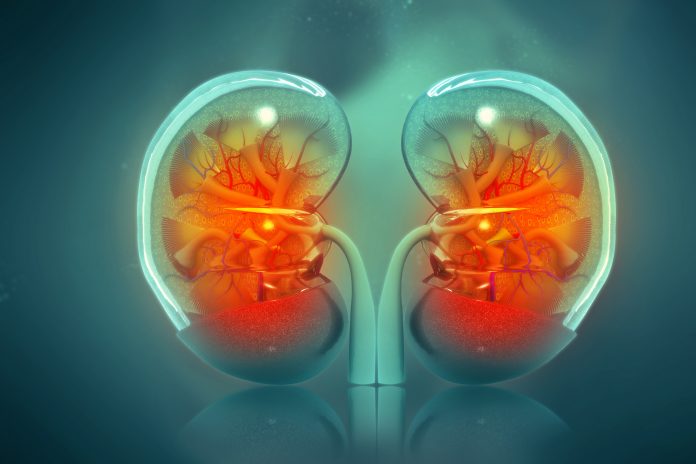Metabolite in Urine Predicts Diabetic Kidney Disease 5-10 Years Early; Oral Therapeutic Drug Shows Promise in Mice
Researchers from The University of Texas Health Science Center at San Antonio (UT Health San Antonio) have unveiled a groundbreaking discovery related to diabetic kidney disease. In a recent publication in the Journal of Clinical Investigation (Aug. 24), they reveal how urine levels of adenine, a metabolite produced in the kidney, can serve as both a predictive and causative biomarker for progressive kidney failure in patients with diabetes. This discovery holds the potential for earlier diagnosis and intervention.
Challenging the Current Standard Marker
Historically, the primary marker for kidney disease in diabetes patients has been the presence of protein (albumin) in urine. However, this marker does not apply to all patients with diabetes who develop kidney disease. Astonishingly, up to half of diabetes patients experiencing kidney failure do not exhibit significant levels of protein in their urine. Considering that more than 37 million people in the U.S. live with diabetes and remain at increased risk, even with low albumin levels, this discovery carries immense significance. This study is the first to identify these high-risk patients in the early stages by measuring the new causative marker, adenine, in urine.
Tip: Please fill out this form to determine whether or not you or a friend are eligible for a CGM.
Potential for Early Intervention
The findings open the door for clinical testing to determine, five to ten years before kidney failure, whether a patient is at risk. Dr. Kumar Sharma, the senior study author, and professor and chief of nephrology at UT Health San Antonio, believes this discovery could revolutionize the approach to diabetic kidney disease. Importantly, the research team also identified a therapeutic drug that reduces kidney adenine levels in mice with type 2 diabetes. This drug successfully protected against key aspects of diabetic kidney disease without affecting blood sugar levels, offering hope for precision medicine in the early stages of the disease.
Consistency Across Diverse Study Populations
The study encompassed over 1,200 People living with diabetes across three international research cohorts. These cohorts included diverse populations such as African Americans, Hispanics, Caucasians, and American Indians in the U.S., as well as predominantly Chinese, Asian Indian, and Malay populations in Singapore. Remarkably, the consistent pattern observed in each study confirmed that high urine adenine levels correlated with a higher risk of kidney failure. The research team expressed gratitude to all participants and collaborators involved in this global effort.
Mapping the Metabolites
UT Health San Antonio has pioneered a technique called spatial metabolomics, enabling researchers to pinpoint the locations of adenine and other small molecules within kidney tissues from human patients. This technique provides valuable insights into how adenine influences kidney health. Metabolites, small molecules produced through metabolism, play a crucial role in either promoting healthy cell function or contributing to disease patterns.
Read Guide about Wegovy Dosage Guide: The Best Way For Weight Loss
Adenine’s Presence in Kidney Tissues
The research team discovered endogenous adenine around scarred blood vessels in the kidney, as well as around tubular-shaped kidney cells undergoing destruction. This presence of endogenous adenine suggests that the metabolite may affect other parts of the body, potentially contributing to all-cause mortality among study participants.
Dispelling False Sense of Security
Many diabetes patients are aware of their increased risk of kidney disease but erroneously assume they are protected if they do not exhibit protein in their urine. In reality, kidney disease can progress silently, and patients often remain unaware until it reaches an advanced stage, making kidney protection and prevention of dialysis more challenging.
Must Read About: Reduce Insulin Resistance & Prevent Diabetes with bacteria
Life-Altering Treatment
Patients requiring dialysis must undergo placement of a fistula or catheter and spend several hours on a dialysis machine multiple times a week. The mortality rate, particularly among patients with diabetes and kidney failure, remains alarmingly high, with approximately 40% mortality within five years.
The Need for a New Approach
While treatments to protect against diabetes and high blood pressure are improving, they only marginally delay the progression of kidney disease and eventual failure. The measurement of urine adenine, though challenging, now benefits from a robust and sensitive method developed by the Center for Precision Medicine at UT Health San Antonio. With early identification of patients and new therapies targeting adenine and kidney scarring, there is hope for blocking kidney disease or extending the lifespan of the kidney significantly. Dr. Sharma and his team are optimistic about the potential for a new era in the treatment of diabetic kidney disease.


